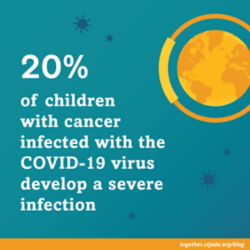What Is Palliative Care and Why Does It Make a Difference?
The goal of pediatric palliative care is straightforward. But it has a profound impact. It helps children have the best quality of life they can, regardless of their diagnosis or prognosis.
Quality of life can mean a variety of things, depending on the child and the family. But providers who offer pediatric palliative care believe "there is always something to be done."
That positive attitude is effective, too. Research shows that patients who receive palliative care live more fully than those who do not.
November is National Hospice and Palliative Care Month in the United States. So now is a good time to learn more about palliative care and how it can make a difference.
You may not have heard about palliative care. If you haven't, then here’s a simple definition to introduce you to it and help you understand why it’s so important.Palliative care is for children and teens living with life-threatening illness or condition. The goal is improving the quality of life for patients and their families.
- Physical symptoms
- Social needs
- Spiritual needs
- Psychological needs
Palliative care specialists also work with members of the patient’s family, like parents and siblings.
Palliative Care Doesn't Mean You've Stopped Looking for a Cure

Image taken before the COVID-19 pandemic
Many people think that seeking palliative care means you aren’t looking for a cure anymore. But that isn’t the case. In fact, palliative care supports treatments and helping patients live longer, happier lives.
The American Academy of Pediatrics (AAP) recommends palliative care at every stage of treatment. Palliative care providers take a compassionate and holistic approach to care.
Palliative Care Involves an Entire Team
The palliative care team works together to lessen a child’s suffering. That can help the entire family enjoy life more and make better, clearer decisions.
Palliative care requires many different people working together to support patients and families. This team meets the patient and their family where they are. Patients can receive palliative care:
- At home
- In the community
- In the hospital
- At a hospice
- At a community center
- At a health center
Regardless of where patients receive palliative care, they can enjoy the benefits it provides.
Palliative Care Is Important Worldwide
In 2014, the World Health Organization (WHO) World Assembly recognized the role palliative care plays in helping children and adults living with life-threatening or life-limiting illnesses.
The WHO encouraged countries to:
- Revise laws and processes to improve access to pain relief
- Include palliative care in the training of health workers
- Provide palliative care services at homes and centers
If you have questions about palliative care or want to learn more about it, reach out to your child’s care team. They can help you understand what’s available to help your child in your area.
The goal is to add life to the child's life, not simply years to the child's life.





